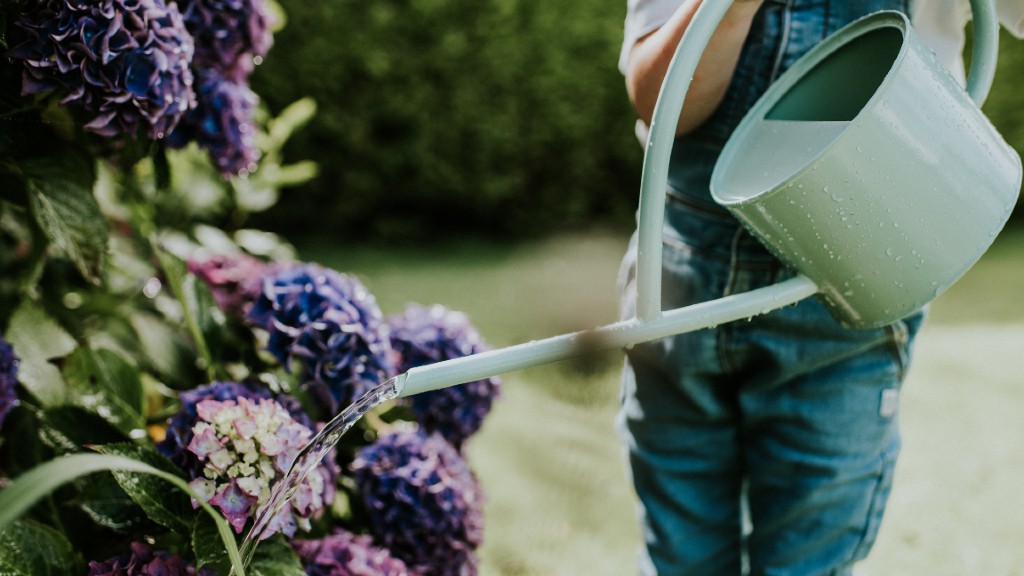Hydrangea Water Requirements
How much water does a hydrangea need? It all depends on the species, sunlight, soil and where you live.


To keep hydrangeas performing their best, it's important to keep them well hydrated. But how much water is enough for hydrangeas? Learn which factors contribute to how much water your hydrangeas need to thrive.
How Much Water Do Hydrangeas Need?
Hydrangea water requirements are an important component of hydrangea care. These bountiful shrubs are not drought tolerant, so providing consistent watering will ensure your hydrangeas stay in peak performance year after year.
But how much water do hydrangea plants need? It depends on the cultivar, but by selecting the right plant and putting it in the right place, you are ahead of the curve in meeting its watering needs.
Hydrangea Water Requirements
Hydrangeas clearly need ample water to produce those showy blooms, but how often to water a hydrangea comes down to the species, the soil type, its location in sun or shade, and the climate. Generally, it is recommended they get 1 inch ( 2.5 cm) of water a week, either by rainfall or irrigation.
First and foremost, be sure you choose the hydrangea cultivar that fits the space and the sun requirements of where you want to plant the shrub. Some hydrangeas can grow 10 to 12 feet tall (3 to 3.6 m) and wide, so be sure you don't plant a large hydrangea in a space that’s more suited to a dwarf hydrangea, topping out at 3 feet (0.9 m) tall. If the hydrangea you choose needs morning sun and afternoon shade, planting it on a hill in full, blazing sun will require constant water to keep it alive.
If your soil is clayey or compacted, amending it with compost will loosen the soil so water can drain easily. Hydrangeas do not like their roots sitting in water, which can lead to root rot. If a hydrangea’s leaves have brown edges or are dropping, it may be overwatered because of poor drainage.
Deep Watering
Once you have the perfect hydrangea in the perfect location, watering is not such a chore. Deep watering at regular intervals will allow your hydrangea to thrive. Use a soaker hose or drip irrigation for best results.
Gardening tips, videos, info and more delivered right to your inbox!
Sign up for the Gardening Know How newsletter today and receive a free copy of our e-book "How to Grow Delicious Tomatoes".
In addition, mulching well around the hydrangea will help retain moisture.
Sun or Shade
Different hydrangea species require more or less sun. But as the sun exposure increases, so does the amount of hydrangea water. Here is the rundown:
- Bigleaf hydrangea (Hydrangea macrophylla) prefers morning sun and afternoon shade. The reblooming cultivars, such as Endless Summer, tolerate more sun.
- Oakleaf hydrangea (Hydrangea quercifolia) does well in dappled shade or part sun.
- Smooth hydrangea or wild hydrangea (Hydrangea arborescens) can do well in part sun, light shade or deep shade.
- The panicle hydrangeas (Hydrangea paniculata) are the most sun tolerant species and can handle full sun with ample water. However, it’s best to offer them some afternoon shade.
- Mountain hydrangea (Hydrangea serrata) is drought tolerant and performs well in full sun or part shade.
Also, if you live in a cool climate, your hydrangeas will require less water than if you live in a warm, humid area.
Hydrangeas will let you know if you have neglected your irrigation duty. In the afternoon, it is normal for the foliage to droop a bit under the stress of warmth. But as temperatures decline in the evening, the foliage perks up. In the morning, however, if the foliage is still droopy, it’s time to water!

After graduating from Oklahoma State University with a degree in English, Susan pursued a career in communications. In addition, she wrote garden articles for magazines and authored a newspaper gardening column for many years. She contributed South-Central regional gardening columns for four years to Lowes.com. While living in Oklahoma, she served as a master gardener for 17 years.
-
 12 Lush Alternatives To A Lawn For Sustainable Spaces
12 Lush Alternatives To A Lawn For Sustainable SpacesAlternatives to a lawn are beautiful and also beneficial to your local ecosystem and its pollinators. Explore our top picks for plants to replace grass.
By Tonya Barnett
-
 Types Of Tomatoes Explained: Explore The Many Wonderful Shapes, Colors, Flavors, & Best Uses
Types Of Tomatoes Explained: Explore The Many Wonderful Shapes, Colors, Flavors, & Best UsesThe world of tomato varieties is vast and fascinating. Learn about the key types to grow in your garden, tailored to your preferences and space.
By Amy Grant